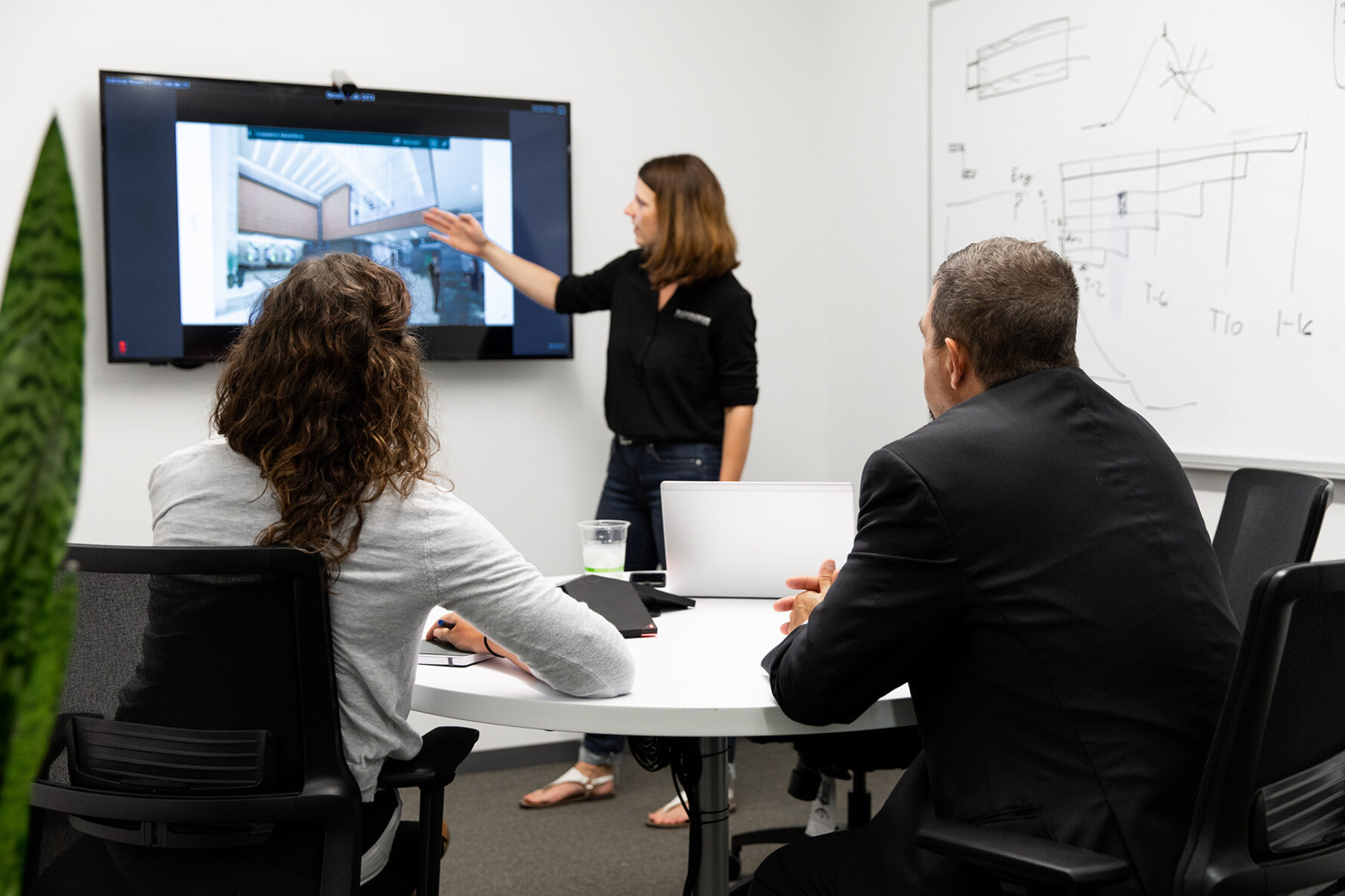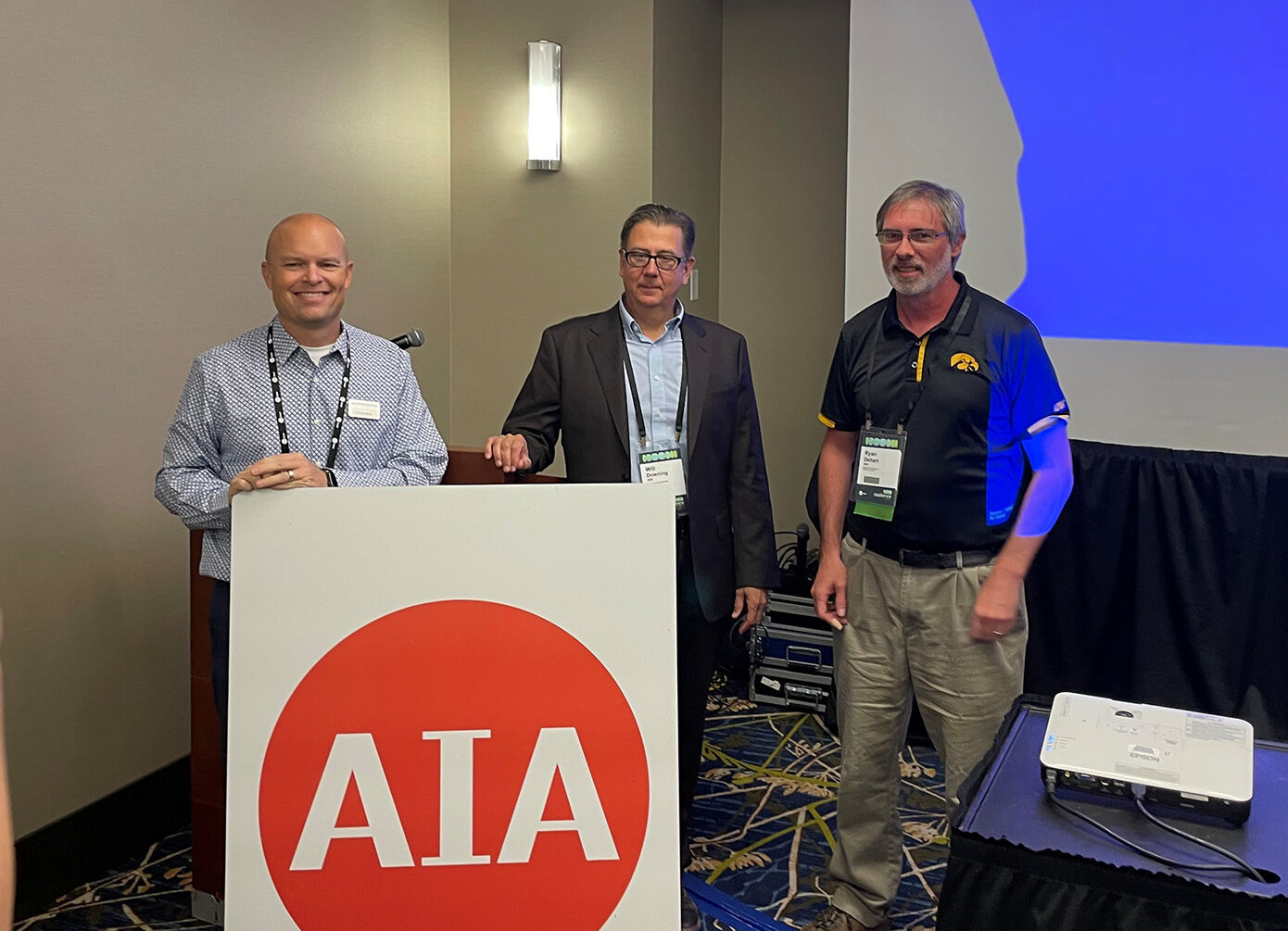Integrated Strategies for Academic Medical Center and Facility Modernization
Top Takeaways from an AIA Iowa Presentation

In complex construction projects, success begins with early alignment among stakeholders, design teams and construction partners to establish a shared understanding of goals, constraints and opportunities. At the recent AIA Iowa Convention, UI Health Care Maternity Services Expansion project team—McCownGordon, RDG Planning & Design, and University of Iowa—demonstrated how early integration, thoughtful planning, stakeholder engagement, and continuous reality checks lead to resilient, patient-centered outcomes.
EARLY ALIGNMENT
“When embarking on a project, it’s critical to understand both the project scope and the client’s needs from the very beginning,” said Ryan Dehart, Associate Director of Design and Construction, Facilities Management at the University of Iowa. He emphasized that fostering collaboration early in the process allows teams to align more effectively and lay the groundwork for a successful outcome.
On the UI Health Care Maternity Services Expansion project, early alignment proved essential in navigating a complex schedule, which included multiple design phases, project restarts, strict owner design requirements and tight site constraints.
Dehart explained how the team overcame challenges through early collaboration. The team ensured the new space would integrate with critical infrastructure upgrades, which required enabling the relocation of utilities through active hospital zones—an effort that required meticulous preplanning to avoid disrupting patient care. This proactive, strategic approach enabled the team to overcome logistical hurdles and maintain project momentum.
A NEW PERSPECTIVE ON RETURN ON INVESTMENT
“What does success look like in complex construction projects? It’s not just about how quickly new spaces can open—it’s about maximizing long-term value and not impacting patient services/operations during construction,” said Adam Reed, project executive at McCownGordon Construction.
From day one, the team prioritized collaboration, engaging both internal stakeholders and end users to ensure the project aligned with operational goals and patient care needs. Recognizing that mechanical, electrical and plumbing (MEP) trade partners often account for 25 to 50+ percent of the total budget, McCownGordon brought them into the process early. Their involvement helped preserve schedule integrity and informed smarter design decisions.
Strategic team integration and thoughtful phasing are critical to balancing construction with ongoing operations. “The team evaluated multiple phasing options, ultimately going through four iterations, to minimize disruptions, protect revenue streams and preserve the patient experience,” Reed said.
Maintaining open communication through weekly coordination meetings allows the team to anticipate impacts and adjust plans in real time. Decisions around working hours, construction pathways and continuous feedback loops enable the project to move forward without compromising care quality or patient safety.
INTEGRATED DELIVERY RELIES ON STAKEHOLDER ENGAGEMENT
Throughout the design process, the project team embraced a user-centric approach that prioritized stakeholder engagement at every stage. Will Downing, senior partner and healthcare market leader at RDG Planning & Design, shared how the team initially scheduled in-person design meetings to involve hospital end users. When attendance lagged, they quickly pivoted to virtual sessions held at 7 a.m.—a move that significantly increased participation, with up to 70 end users joining regularly.
“Consistent feedback from these end users proved invaluable throughout the design phase,” said Downing. To bring the design to life, the team created full-scale cardboard mock-ups of the new maternity spaces, allowing staff to physically interact with room layouts and optimize placement for patient care. Additionally, a mock-up room using actual materials and casework closely matching the final design was used early in the process. This allowed the team to validate virtual decisions and ensure real-world functionality before full-scale construction began.
This integrated delivery approach, grounded in collaboration and continuous feedback, helped align design with operational realities and patient-centered outcomes.
REALITY CHECK
Conducting reality checks throughout a project, not just at major milestones, is essential to ensuring design decisions remain aligned with real-world constraints and owner requirements. For example, the University of Iowa Design Standards and product specifications left little room for deviation. By understanding these criteria early, the team proposed viable solutions from the start—saving time and ensuring strong alignment with institutional goals.
Reality checks also played a key role in navigating variables like schedule phasing and identifying areas where flexibility could be introduced. By proactively evaluating the feasibility of ideas and responsively adapting plans, the team minimized costly rework and kept the project on track.
The takeaway is clear: early stakeholder alignment, integrated planning, and continuous feedback are key to successfully delivering a responsive, resilient, user-centered project.
Learn more about the UI Health Care Maternity Services Expansion




